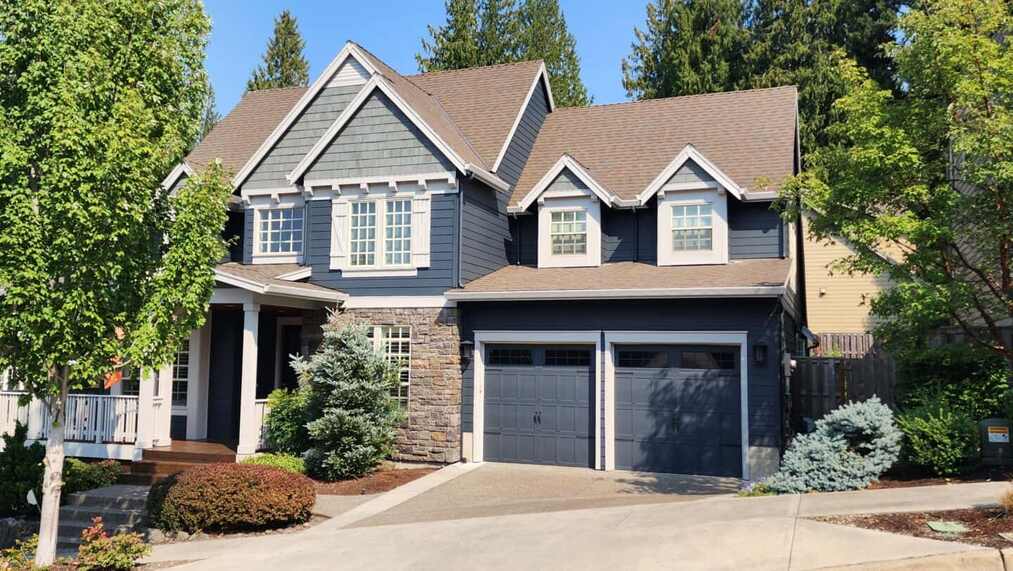Why You Shouldn’t DIY Your Exterior Painting in Texas Heat

When DIY Meets Triple-Digit Temperatures
Painting your home’s exterior might seem like a manageable weekend project—until you’re halfway up a ladder in 104°F heat with paint drying faster than you can roll it. In Texas, summer painting isn’t just uncomfortable—it’s risky. Painting a House Exterior in heat can lead to poor results and safety concerns.
Every year, well-meaning homeowners take on exterior paint jobs during the hottest months, not realizing how much the heat impacts both the process and the result. Between unpredictable weather, safety hazards, and the technical challenges of painting in high temperatures, this DIY project can quickly become a costly misstep.
This guide breaks down the dangers of painting your house exterior in heat—and why hiring a pro might be the smarter choice for your home, your health, and your budget.
Paint Doesn’t Perform Well in High Heat
Paint is a chemically reactive material. It needs specific temperature and moisture conditions to cure properly. But once the thermometer spikes—as it often does from spring through fall in Texas—those conditions are hard to come by.
Before you open a single can of paint, it’s important to understand what can go wrong when applying paint in excessive heat:
- Paint dries too quickly on the surface. Rapid evaporation causes paint to “skin over” before it bonds properly. The result? Streaks, visible brush marks, or blistering that may not show up until months later.
- You end up with uneven finishes and shorter durability. Fast-drying paint doesn’t have time to self-level or adhere as strongly to surfaces. That means you could see lap marks, uneven sheen, or peeling sooner than expected.
- The surface temperature can be hotter than you think. Even if the air is 95°F, sunlit siding or trim may reach 130°F. Most paint manufacturers advise against applying product when surfaces exceed 90–100°F—doing so may void warranties and ruin your finish.
If you’re after a long-lasting result that won’t fade, peel, or bubble in a single season, applying paint in high heat is a gamble you don’t want to take.
Your Health Is on the Line, Too
It’s not just your siding that takes a beating—your body does too. Painting outside under the Texas sun brings real physical risks, especially if you’re untrained or unprepared. Painting a house exterior in heat only increases these dangers.
Even routine tasks like moving ladders, stretching, and standing on hot surfaces become dangerous when heat is in the mix. Here’s how the strain adds up:
- Heat exhaustion and heat stroke are real threats. Prolonged exposure combined with physical exertion can overwhelm your body’s ability to regulate temperature. Symptoms include dizziness, nausea, rapid heart rate, and in severe cases, loss of consciousness.
- Dehydration can sneak up fast. You might think you’re drinking enough water, but the Texas sun can sap fluids and electrolytes quickly—leading to fatigue, headaches, and slow reaction time.
- Higher accident risk. Heat dulls focus and coordination, making you more prone to slipping off ladders, dropping tools, or making judgment errors while elevated or handling equipment.
- UV exposure can do lasting damage. Without proper clothing and protection, you’re at high risk for sunburn, heat rash, and long-term skin damage.
Professional painters are trained to work in high-heat environments safely. They build in rest breaks, wear the right gear, and know their limits—most DIYers don’t.
Professionals Know When—and How—to Paint in the Heat
Some homeowners assume that painting in hot weather just takes more willpower. But professionals know that success depends on a combination of timing, technique, and product choice.
Here are just a few of the ways pro painters adjust for extreme temperatures:
- They paint at the right times of day. Early mornings are cooler and less humid, which gives paint time to cure slowly and evenly. Crews avoid working between 11 a.m. and 4 p.m. when surface temps spike and drying accelerates.
- They choose products built for Texas conditions. Not all exterior paints are the same. Pros select high-performance formulas with heat-tolerant resins, UV-blocking additives, and slower drying profiles to protect against sun damage.
- They apply paint using adjusted techniques. From feathering edges to back-rolling in shaded areas, painters tweak their application methods based on real-time weather, surface material, and sun exposure. It’s the kind of detail that makes a job last 10+ years instead of failing in two.
Without these professional strategies, even a good paint job can fail prematurely—leaving homeowners with uneven results and no warranty coverage.
The “Cheap” Route Can Get Expensive Fast
Let’s say you brave the heat, manage to finish the job, and step back to admire your work. That satisfaction might be short-lived.
Here’s why taking the DIY route during peak heat can cost more than hiring pros in the first place:
- Fixing mistakes gets pricey. If your paint peels or bubbles within a few months, you’ll either need to strip it all off or repaint entirely—doubling your time and material costs.
- You may have to rent or buy specialty gear. Scaffolding, sprayers, drop cloths, safety harnesses… they all add up. For many homeowners, the equipment cost alone rivals a professional crew’s labor rate.
- You’ll lose valuable time. Working around the heat means shorter windows each day, which stretches a one-weekend job into several. Add in prep, cleanup, and touch-ups, and your summer starts disappearing fast.
- You’re taking on all the risk. No insurance, no backup plan—just you and your ladder. One injury or damaged area can result in medical bills or home repair costs that offset any initial savings.
DIY projects have their place—but painting your home’s exterior in extreme Texas heat just isn’t worth the risk.
A Smarter Way to Protect Your Home (and Yourself)
If you want your paint job to look sharp, hold up through the seasons, and not send you to urgent care, the safest option is to hire a team that knows how to work with Texas—not against it. Professionals understand the risks of painting a house exterior in heat and how to avoid them.
Let’s summarize what we’ve covered:
- Paint doesn’t cure properly in high heat, which leads to surface flaws and poor durability
- DIY painters face serious health risks, from heat exhaustion to UV exposure
- Pros use timing, tools, and techniques tailored for Texas weather
- The DIY route can cost more, both financially and physically, when things go wrong
Professional painting crews bring more than ladders and rollers—they bring experience, protection, and peace of mind.
Thinking about an exterior refresh this summer? Get a free quote and let a local expert handle the prep, product, and performance—while you stay cool inside.

